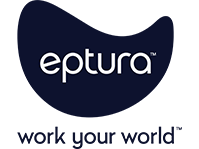
The workplace revolution that began in 2020 has entered a new phase in 2025. What started as a reactive shift to remote and hybrid work has evolved into a deliberate transformation in how enterprises think about time, space, and autonomy.
While many organizations adopted hybrid work models in recent years, a new question is surfacing in boardrooms and HR strategy sessions around the world: is hybrid work enough, or should enterprises be leaning into truly flexible work?
For organizations operating on a global scale, this isn’t a theoretical debate. It’s a strategic decision that affects everything from real estate investments to talent acquisition, operational efficiency, and employee engagement. To understand what leading enterprises are doing now, it’s crucial to clarify the difference between hybrid and flexible work, and why that distinction matters more than ever.
Hybrid work: The structured shift
Hybrid work, as most companies implemented it post-2020, is a structured blend of in-office and remote work. Typically, employees are assigned specific days to be on-site, often coordinated by department, location, or role. This model offered a much-needed alternative to full-time office attendance, and for many, it felt like a welcome compromise.
But hybrid work isn’t synonymous with flexibility. It’s a predefined model, usually directed by the employer. While it eliminates the daily commute and adds breathing room for focused work, it still relies on rigidity. Employees may enjoy being home part of the week, but they’re still expected to adhere to an organizational calendar. In many hybrid setups, teams rotate in and out of office space on fixed schedules, which helps optimize real estate but can create challenges with collaboration and cross-functional planning.
This structured approach works well in highly regulated industries or in teams that benefit from predictable workflows. Yet it can fall short for employees who need more control over their time and work environment. For instance, caregivers, neurodiverse workers, and global teams operating across time zones may find hybrid policies limiting rather than empowering.
Flexible work: Autonomy in action
Truly flexible work shifts the power dynamic. Rather than assigning fixed schedules, it allows employees to choose when, where, and how they work, within guidelines aligned to business needs. Flexible work trusts people to make decisions based on their productivity rhythms, team responsibilities, and personal circumstances.
In a flexible model, the workplace becomes a dynamic resource rather than a mandated location. Employees can opt into office time when it supports collaboration or focus and work remotely when it better suits the task or their wellbeing. The office remains a valuable hub, but it’s not an obligation. Technology enables this fluidity, with platforms for workspace booking, collaboration, and visibility ensuring that flexibility still maintains an organized workforce.
Flexible work also reflects a broader shift in work culture — one that favors outcomes over attendance, and trust over control. It empowers employees to tailor their workday in a way that supports both business outcomes and personal wellbeing.
Why the distinction matters in 2025
In 2025, the difference between hybrid and flexible work is not just semantic, it’s strategic.
Hybrid work solved a logistical problem in the wake of a crisis. Flexible work is solving for sustainability, talent retention, and organizational resilience.
Employees have become more vocal about what they want from their work experience. Surveys consistently show that autonomy, purpose, and flexibility rank higher than perks or even pay in many cases. Organizations that cling to rigid hybrid models may find themselves struggling to attract and retain top talent, especially across generational and geographic lines.
Moreover, operational complexity has increased. As companies expand into new markets or work across time zones, centralized scheduling creates unnecessary friction. Flexible models allow for more seamless collaboration across global teams and reduce the cognitive and administrative load of enforcing attendance policies that don’t add value.
What leading enterprises are adopting this year and beyond
The most forward-thinking global enterprises have evolved beyond simple hybrid schedules and are leaning into flexible-first models that prioritize employee autonomy while still delivering on business goals.
These organizations are redefining what productivity looks like. Instead of measuring time spent in the office or hours logged online, they focus on outcomes, collaboration quality, and customer impact. They’re redesigning their offices to function as experience centers — spaces optimized for purposeful collaboration, creative thinking, and team bonding — rather than rows of desks and cubicles.
They are also investing in technology that supports dynamic work. Workplace experience platforms now enable employees to see when colleagues will be in the office, book a workspace or meeting room in real time, and integrate their schedules across devices. This level of control gives employees the agency they crave while ensuring that physical office space is used efficiently.
From a policy standpoint, leading enterprises are offering choice while setting clear expectations. They’re moving away from mandates and toward mutual accountability. Instead of telling teams when to be in the office, they empower managers and employees to align on what makes sense for their work and team dynamics.
Importantly, global companies are localizing their approaches. They recognize that a one-size-fits-all policy doesn’t work across borders. In Asia-Pacific, where office culture still leans toward in-person presence, flexible models may offer structured guidelines. In Western Europe or North America, employees might have greater autonomy, with tools and metrics to ensure transparency and effectiveness.
This isn’t flexibility for flexibility’s sake — it’s an evolution of work that aligns human needs with business goals. And it’s helping global enterprises become more agile, resilient, and attractive to diverse talent.
The role of technology in enabling the shift
This new world of work simply wouldn’t be possible without a solid digital foundation. Collaborative tools, workspace management platforms, and intelligent scheduling systems are now table stakes. Enterprises are investing in unified platforms that streamline booking, communications, data analysis, and employee experience into a cohesive system.
The right tech stack allows teams to coordinate effortlessly, regardless of where they’re located. Employees can plan their week, find available desks or rooms, schedule meetings, and collaborate across time zones, all from a single platform. Leaders gain insights into how space is being used, when teams are most productive, and how engagement is trending over time.
Cloud-based, mobile-first solutions are no longer “nice to have”— they’re essential infrastructure. Enterprises that want to scale flexible work sustainably are doubling down on these systems to ensure consistency, security, and simplicity across regions.
Embracing the future of work
As we navigate 2025, the conversation is no longer about whether hybrid or flexible work is better — it’s about what kind of work model supports a company’s people, purpose, and potential. Leading enterprises understand that flexibility is not a trend. It’s a fundamental shift in how we define work itself.
Organizations that embrace truly flexible work are not just responding to employee demands, they’re future-proofing their business. They’re building cultures of trust, investing in systems that scale with them, and creating environments where people do their best work, wherever they are.
For a closer look at how technology enables truly flexible work, you can request a demo of Eptura’s worktech platform to see these capabilities in action.








